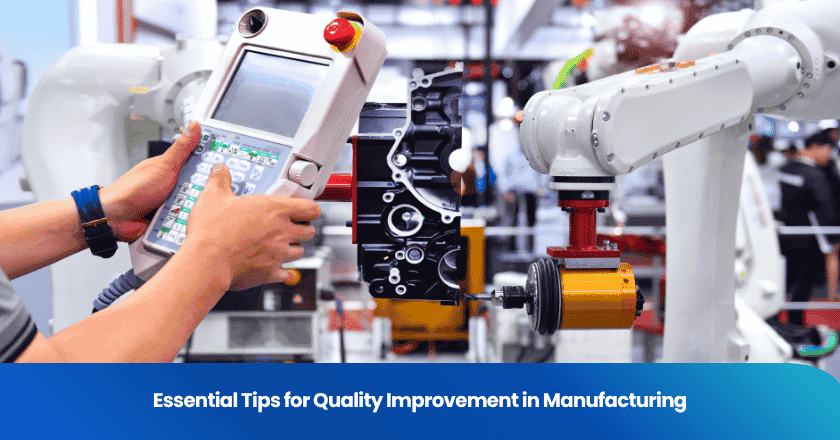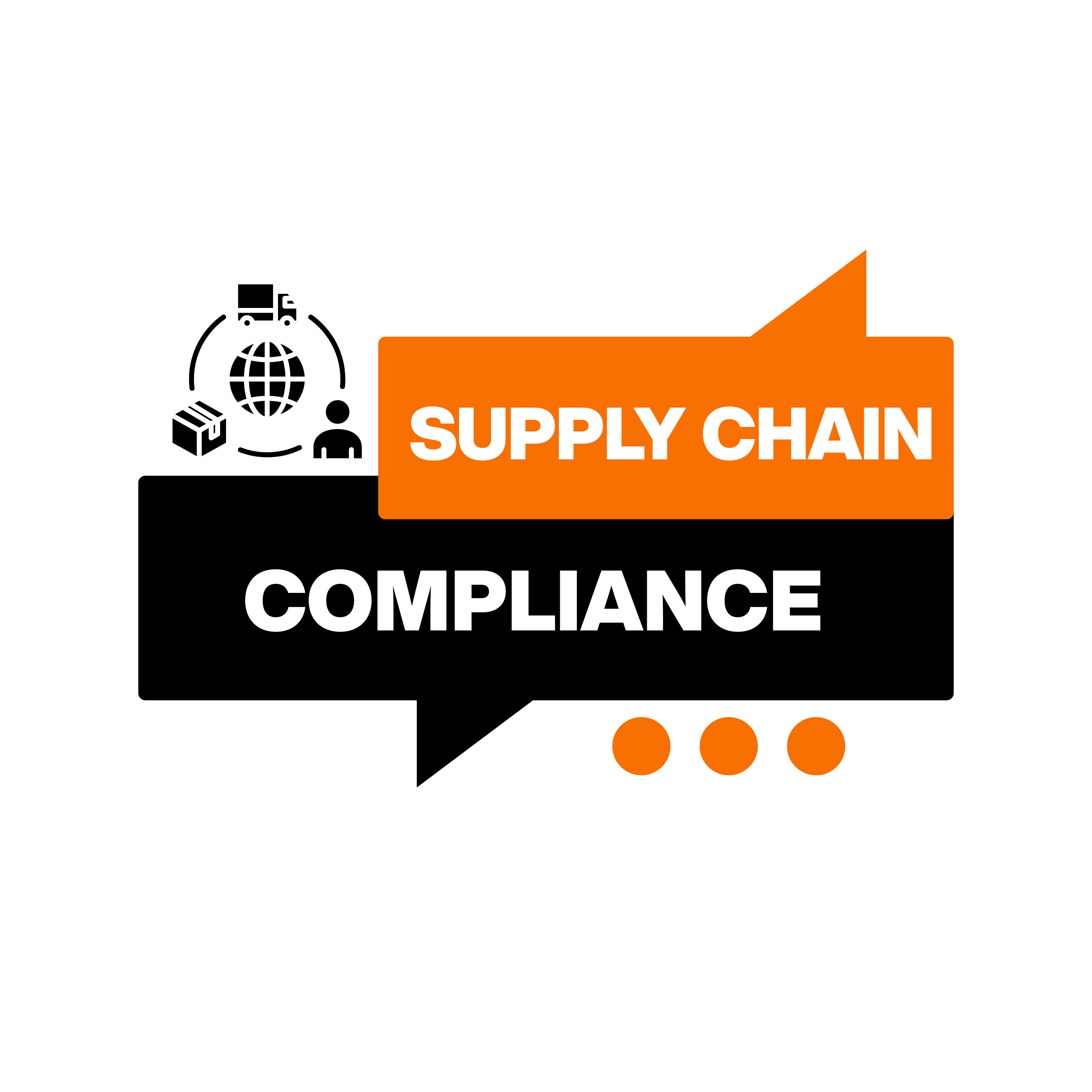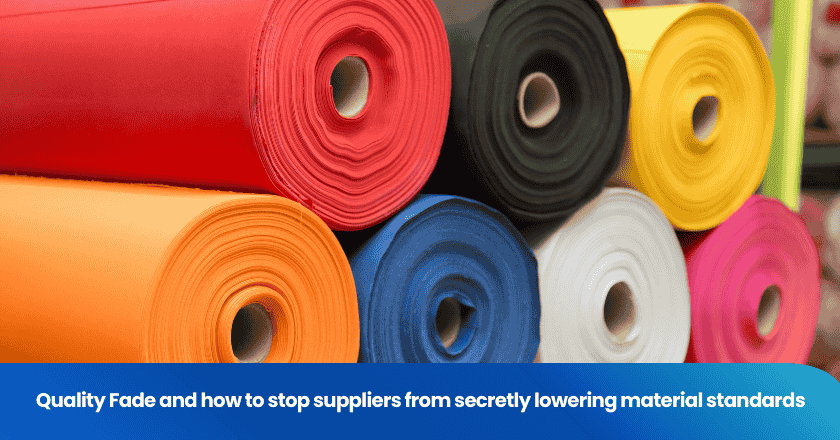
If you want to know how to improve quality in manufacturing, start by implementing a systematic approach that monitors, evaluates, and continuously enhances your production processes. Quality improvement ensures product excellence and meets customer expectations. Effective quality control brings measurable results:
| Benefit | Description |
|---|---|
| Increased Efficiency | Streamlined processes reduce downtime and inefficiencies. |
| Cost Savings | Preventing quality issues leads to substantial cost reductions. |
| Better Customer Satisfaction | Consistent outcomes improve customer retention and satisfaction. |
You can also reduce unplanned downtime, which costs major manufacturers 11% of their yearly turnover.
Key Takeaways
- Implement a systematic approach to monitor and enhance production processes for better quality.
- Standardize processes to reduce errors and improve consistency across manufacturing operations.
- Invest in employee training to equip your workforce with the skills needed for high-quality output.
- Embrace automation and technology to optimize workflows and minimize manual errors.
- Focus on continuous improvement by setting clear goals and involving your team in quality initiatives.
Quality Improvement Overview
What Is Quality Improvement
You drive quality improvement by focusing on continuous betterment of your manufacturing processes, products, and services. This approach relies on several key principles that guide your efforts:
| Principle | Description |
|---|---|
| Continuous Improvement | You seek ongoing ways to elevate products, services, and operations. |
| Data-Driven Decisions | You base choices on objective data and thorough analysis. |
| Collaborative Partnerships | You build strong relationships with stakeholders to align goals and foster innovation. |
| Quality by Design (QbD) | You integrate quality into product development from the start to prevent defects. |
| Lean Manufacturing | You maximize value by minimizing waste and focusing on efficiency. |
| Six Sigma | You use data-driven methods to reduce defects and improve process capability. |
| Total Quality Management (TQM) | You involve everyone in your organization to improve processes and customer satisfaction. |
| Kaizen | You encourage small, incremental changes and employee involvement for ongoing improvement. |
You can also use proven methodologies to achieve your objectives.
The following table outlines core components and objectives of popular approaches:
| Methodology | Core Components/Elements | Objectives |
|---|---|---|
| Six Sigma | DMAIC, DMADV, Statistical Analysis | Reduce process variation, eliminate defects, achieve near-perfect quality |
| Total Quality Management (TQM) | Customer Focus, Employee Involvement, Integrated Systems Thinking, Strategic Approach | Continuous quality improvement, customer satisfaction, organizational integration |
| Operational Excellence | Alignment, Sustainability, Leadership Commitment, Employee Engagement, Adaptability | Sustained integration of improvement initiatives, linking to strategic goals, adapting to change |
Why Quality Matters
You must prioritize quality to remain competitive in manufacturing. Quality affects every aspect of your business, from customer satisfaction to operational efficiency. A strong manufacturing sector drives intellectual capital and economic prosperity for entire countries. Your commitment to quality not only benefits your company but also contributes to national growth.
Manufacturers face several challenges when pursuing quality improvement:
1. You must maintain consistent quality across global supply chains, which can introduce complexity and inconsistencies.
2. You need to adhere to evolving regulatory compliance standards, especially in industries like aerospace and pharmaceuticals.
3. You must balance cost-efficiency with quality standards, often leading to decisions about outsourcing and automation.
Tip: When you focus on quality, you reduce waste, boost productivity, and ensure compliance with industry standards. This approach helps you build a reputation for reliability and excellence.
How to Improve Quality in Manufacturing
Quality improvement in manufacturing requires a strategic approach that addresses every aspect of your production environment. You can achieve higher quality and consistency by focusing on four essential pillars: standardizing processes, automating and integrating systems, investing in employee training, and keeping processes simple. These steps form the foundation for how to improve quality in manufacturing and drive continuous improvement.
Standardize Processes
You must establish clear and repeatable processes to ensure consistent quality across your operations. Standardization reduces variability, minimizes errors, and streamlines workflows. When you engage everyone in the process, you build understanding and commitment throughout your organization. Documentation of each process provides a reference for audits and helps you identify areas for correction.
Key strategies for standardizing processes include:
- Involve all stakeholders to foster buy-in and understanding.
- Maintain thorough documentation for reference and compliance.
- Monitor and analyze performance metrics to assess effectiveness.
Enterprise Standardization in manufacturing helps create efficient and repeatable processes across all facilities, reducing production variability and ensuring optimal plant performance.
Conducting a manufacturing process audit allows you to uncover inefficiencies and bottlenecks. This assessment reveals opportunities for improvement, such as adopting advanced technologies or reconfiguring workflows. When you standardize processes, you reduce costs, improve productivity, and minimize the cost of human errors. You also enhance work consistency and quality, which are critical for how to improve quality in manufacturing.
Automate and Integrate Systems
Automation and system integration play a vital role in how to improve quality in manufacturing. You can leverage the latest technologies to optimize workflows, reduce manual errors, and boost efficiency. Automation eliminates the need for manual effort in routine tasks, ensuring consistent accuracy and precision. You can operate 24/7 without breaks, increasing throughput and maintaining product quality through advanced monitoring systems.
Automation impacts your operations in several ways:
- Significantly reduces inefficiencies by optimizing workflows and minimizing human error.
- Performs repetitive tasks with high precision, enhancing productivity.
- Detects defects early through automated quality control, minimizing waste and ensuring high product standards.
Automation enhances operational efficiency and contributes to cost savings, increased production speed, and improved competitiveness. You can use these technologies to support root cause analysis, helping you identify and address the underlying issues that affect quality.
Employee Training
Your workforce is the backbone of quality improvement. You must invest in comprehensive training programs to equip employees with the skills and knowledge required for high-quality output. Assess skill gaps, risks, and regulations to tailor training effectively. Focus on key pillars such as safety and compliance, job-specific technical skills, soft skills, teamwork, and employee well-being.
Best practices for employee training:
- Start with a needs assessment to identify specific training requirements.
- Develop clear learning objectives to guide the program.
- Use a blend of training methods to cater to different learning styles.
- Prioritize safety training to ensure compliance and reduce workplace injuries.
- Make training continuous to keep employees updated on industry changes.
Continuous training correlates directly with defect reduction and process improvement. When you empower your team, you create a culture of accountability and excellence, which is essential for how to improve quality in manufacturing.
Keep Processes Simple
Simplicity is a powerful driver of quality improvement. You should establish clear quality standards and implement continuous improvement processes. Technology helps you track compliance and performance, while lean manufacturing principles reduce waste and enhance efficiency.
Ways to simplify processes:
- Establish clear quality standards.
- Implement continuous improvement initiatives.
- Utilize technology for better tracking and compliance.
- Adopt lean manufacturing principles to minimize waste.
1. Reduce defects.
2. Increase efficiency of slower or resource-intensive processes.
3. Improve customer service.
4. Proactively identify and address potential risks.
5. Manage vendor relationships more effectively.
6. Boost employee engagement.
Lean manufacturing maximizes value while minimizing waste. You benefit from reduced inventory costs, shorter production cycles, and improved quality by identifying defects earlier in the process. Simpler processes make it easier to perform root cause analysis, allowing you to resolve issues quickly and maintain high standards.
Tip: Focus on simplicity and clarity in your workflows. This approach supports how to improve quality in manufacturing and ensures your team can consistently deliver excellent results.
Manufacturing Quality Control Methods
Effective manufacturing quality control relies on proven methods that help you detect defects, monitor processes, and prevent issues before they impact your products. You can choose from several approaches to strengthen your quality control strategy and maintain high standards.
100% Inspection
You use 100% inspection to examine every item produced. This method ensures you catch every defect, unlike sampling methods that may miss low-frequency issues. When you apply 100% inspection, you increase defect detection rates and reduce the risk of faulty products reaching customers.
Although 100% inspection provides thorough coverage, it can be resource-intensive. You should reserve this approach for critical components or high-risk processes in your manufacturing quality control plan.
Statistical Process Control
Statistical process control (SPC) uses statistical techniques to monitor and control your production processes. You track data in real time, allowing you to spot variations and address them before defects occur. SPC improves product quality by detecting issues early, reducing waste, and boosting operational efficiency. You also enhance accountability within your quality management system and achieve significant cost savings by minimizing rework.
- Early detection of process variations
- Reduction of waste and defects
- Increased accountability in quality control
- Cost savings through fewer defects
You must train your team to interpret SPC data correctly. Integrating SPC into your manufacturing quality control system requires effort, but the long-term benefits include consistent quality and improved process reliability.
Digital Quality Gates
Digital quality gates provide real-time monitoring and defect prevention at key stages of production. You use simple digital tools to detect defects early, reduce waste, and optimize processes without full automation. Operators track defects hands-on, which increases accountability and supports preventive maintenance.
- Early defect detection and reduced scrap
- Operator involvement in defect tracking
- Cost-effective process optimization
- Predictive maintenance alerts
Digital quality gates help you identify patterns, correlate defects with process conditions, and trigger automatic adjustments before problems arise. You continuously improve your manufacturing quality control by leveraging these digital solutions.
Tip: Regularly assess and refine your manufacturing quality control methods. Continuous improvement ensures you maintain high quality standards and adapt to changing production needs.
Proven Quality Improvement Techniques
Six Sigma
You can use Six Sigma to drive quality in your manufacturing operations. This methodology focuses on reducing defects and process variation. You apply data-driven techniques to identify root causes and implement solutions. Many organizations have achieved remarkable results with Six Sigma:
- Significant defect reduction led to billions in savings for major companies.
- Company-wide adoption resulted in notable quality improvements across diverse divisions.
- Eliminating defects helped deliver near-perfect products and services.
Six Sigma empowers you to set measurable goals, analyze processes, and sustain improvements. You build a culture of precision and accountability, which supports long-term success.
Lean Manufacturing
Lean manufacturing helps you maximize efficiency and minimize waste. You identify and eliminate activities that do not add value to your products. Lean principles target eight types of waste:
- Defects: Improve product quality by reducing errors.
- Overproduction: Avoid excess output that increases costs.
- Waiting: Minimize idle time for machines and workers.
- Non-Utilized Talent: Use employee skills to boost innovation.
- Transportation: Streamline material movement.
- Inventory: Manage stock levels to prevent excess.
- Motion: Reduce unnecessary movements.
- Extra-Processing: Remove steps that do not add value.
For example, a food processor that adopted just-in-time principles reduced inventory by 40%, freeing up working capital and cutting storage costs. Lean manufacturing enables you to create efficient workflows and deliver consistent quality.
Total Quality Management
Total quality management (TQM) provides a holistic approach to quality improvement. You involve every employee in the pursuit of excellence. TQM relies on several key principles:
1. Customer-focused organization
2. Total employee involvement
3. Process approach
4. Integrated system
5. Strategic and systematic approach
6. Continuous improvement
7. Fact-based decision making
8. Communications
You benefit from higher customer satisfaction, improved product and service quality, increased efficiency, reduced waste, and enhanced employee morale. Total quality management strengthens organizational flexibility and fosters innovation.
Kaizen
Kaizen encourages you to pursue continuous improvement through small, daily changes. You regularly assess processes, identify inefficiencies, and implement incremental adjustments. This approach has transformed manufacturing environments by empowering employees to suggest enhancements. Teams often organize Kaizen events to brainstorm solutions and measure results. You can use Kaizen to reduce waste, improve quality, and increase production speed. Daily Kaizen practices support ongoing improvement and help you maintain high standards.
Tip: You achieve lasting results by combining these techniques and engaging your entire workforce in the journey toward quality excellence.
Quality Control vs. Quality Assurance
Key Differences
You often hear the terms "quality control" and "quality assurance" in manufacturing, but each plays a distinct role in your operations. Quality assurance takes a proactive approach. You design processes to prevent defects before production begins. Quality control, on the other hand, reacts to finished products. You inspect and test items to identify defects after production.
The following table highlights the main differences between these two approaches:
| Aspect | Quality Assurance (QA) | Quality Control (QC) |
|---|---|---|
| Approach | Proactive, process-oriented | Reactive, product-oriented |
| Timing | Before production | After production |
| Focus | Designing quality into processes | Identifying defects in finished products |
| Methods | Systematic procedures and frameworks | Testing, inspection, and sampling |
| Goal | Prevent defects | Detect defects |
You use quality assurance to oversee the entire production process and prevent errors. You rely on quality control to catch defects in finished goods through inspections and tests. Both methods support your goal of delivering high-quality products to customers.
Tip: You strengthen your manufacturing outcomes by combining proactive quality assurance with thorough quality control.
Quality Management Systems
You need robust quality management systems to support both quality control and quality assurance. These systems document processes and assign responsibilities, helping you achieve your quality objectives. You evaluate processes early in production, which prevents errors and enhances your ability to catch flaws before products reach consumers.
Quality management systems also provide clear procedures for resolving issues quickly. You promote a proactive culture that values continuous improvement. Findings from both quality control and assurance stages guide you in refining your processes and raising your quality standards.
- You establish documented processes and responsibilities to meet quality goals.
- You evaluate production steps early to prevent errors and improve quality control.
- You resolve quality issues quickly with established procedures.
- You foster continuous improvement by using insights from both quality control and assurance.
When you implement quality management systems, you create a foundation for consistent quality and ongoing process enhancement.
Benefits of Quality Improvement
Reduce Waste
You can dramatically reduce waste by focusing on quality throughout your operations. Identifying unnecessary steps and eliminating defects leads to lower operating costs and more efficient resource use. When you streamline workflows, you prevent excess inventory and minimize scrap. Quality improvement initiatives such as Lean manufacturing help you spot inefficiencies and remove them quickly.
Key advantages of waste reduction:
- Lower costs due to fewer defects and smoother operations
- More efficient use of materials and labor
- Enhanced sustainability through responsible resource management
Waste reduction not only saves money but also supports environmental goals and strengthens your reputation in the industry.
Boost Productivity
Quality improvement drives higher productivity by optimizing processes and encouraging innovation. You achieve faster cycle times and higher output without sacrificing quality. When you set production efficiency goals, you motivate your team to prioritize both speed and accuracy. Six Sigma and Lean methodologies focus on reducing waste and improving process flow, which directly increases productivity.
You create a culture where employees suggest improvements and take ownership of results. This approach leads to superior customer service and quicker delivery times.
Ensure Compliance
Quality improvement helps you meet industry standards and regulatory requirements. You build a foundation for ethical practices and operational excellence. Adhering to compliance standards prevents costly legal penalties and reduces the risk of disruptions. Many compliance programs rely on continuous improvement models, so you must regularly assess and refine your practices.
Ways quality supports compliance:
- Implementing statistical process control ensures consistent product standards
- Regular audits help you stay ahead of changing regulations
- Continuous improvement drives long-term innovation and reduces risk
Compliance not only protects your business but also enhances your reputation and supports strategic growth.
Practical Steps for Quality Improvement
Assess Processes
You start your quality improvement journey by assessing your current processes. Begin with data collection to identify trends and spot areas of poor quality. Use this information to make informed decisions. Next, define improvement objectives that align with your manufacturing goals. Clear objectives help you focus on process improvements that deliver measurable results. Apply Lean and Six Sigma methodologies to enhance efficiency and quality. These frameworks guide you in eliminating waste and improving consistency. Root cause analysis allows you to pinpoint the underlying issues that affect quality, so you can address them directly.
1. Collect data to understand process performance.
2. Set clear objectives for improvement.
3. Use Lean and Six Sigma to drive process improvement.
Set Goals
You need to set specific, measurable goals for quality improvement. Establish targets for defect reduction, cycle time, and customer satisfaction. Make sure your goals are realistic and achievable. When you set clear goals, you give your team direction and motivation. Track progress regularly to ensure you stay on course. Adjust your goals as needed to reflect changes in your manufacturing environment.
Involve Staff
You achieve lasting improvement by involving your staff in every step. Encourage employees to share ideas for process improvements and participate in continuous training. When you engage your team, you build a culture of accountability and excellence. Staff involvement leads to better identification of risks and more effective solutions. Recognize contributions to motivate ongoing participation.
Use Technology
You leverage technology to support quality improvement. Digital tools help you monitor processes, track compliance, and automate routine tasks. Use real-time data analytics to detect issues early and prevent poor quality. Technology enables predictive maintenance and streamlines root cause analysis. Adopt solutions that fit your manufacturing needs and scale with your operations.
Tip: Follow these practical steps to create a robust framework for quality improvement and drive sustainable results.
Overcoming Challenges in Quality Control
Manufacturing quality control presents several obstacles that you must address to achieve consistent results. You face resistance to change, limited resources, and the challenge of maintaining consistency across operations. Each issue requires a targeted strategy to ensure your quality improvement efforts succeed.
Change Resistance
You often encounter resistance when introducing new manufacturing quality control processes. Employees may feel uncertain about new systems or worry about job security. To overcome this, you foster a change management culture. You communicate the benefits of quality initiatives and involve staff in decision-making. You provide continuous training to build confidence and competence. When you secure leadership support and enhance communication, you create an environment where change feels less threatening and more rewarding.
Resource Limits
Resource constraints can hinder your ability to implement effective manufacturing quality control. You may struggle with insufficient staff, outdated equipment, or limited budgets. You allocate resources efficiently by prioritizing critical areas. You invest in comprehensive training programs to maximize the skills of your workforce. You standardize processes to reduce waste and improve efficiency. You also establish performance metrics to measure progress and justify resource allocation. These steps help you maintain high quality standards even when resources are tight.
Consistency
Consistency remains a cornerstone of manufacturing quality control. You must ensure that every product meets the same standards, regardless of shifts or locations. You standardize processes and use root cause analysis to identify sources of poor quality. You implement regular audits and continuous training to reinforce best practices. You monitor performance metrics to detect deviations early. These actions help you maintain reliable output and prevent costly mistakes.
Tip: When you address these challenges directly, you build a resilient manufacturing quality control system that supports long-term success. Consistent quality protects your reputation and drives customer satisfaction.
Quality improvement in manufacturing never stops. You drive results by using modern tools and assessing processes regularly. Start with small changes and build momentum. Focus on these steps:
- Embrace technology for better monitoring.
- Involve your team in every improvement.
- Set clear goals and measure progress.
Building a culture of quality starts with your commitment to continuous improvement.
FAQ
What is the first step to improve manufacturing quality?
You should start by assessing your current processes. Collect data on production performance. Identify areas with frequent defects or inefficiencies. Set clear objectives for improvement. This foundation helps you target the most critical issues.
How often should you review quality control procedures?
You need to review quality control procedures regularly. Monthly or quarterly assessments work well for most manufacturers. Frequent reviews help you catch problems early and adapt to changes in production or regulations.
Which technology helps most with quality improvement?
You benefit most from real-time data analytics and automation tools. These technologies monitor production, detect defects early, and streamline workflows. You can use them to track compliance and optimize processes for better results.
Why is employee involvement important in quality improvement?
You gain valuable insights when employees participate in quality initiatives. Staff members spot issues quickly and suggest practical solutions. Their involvement builds accountability and supports a culture of continuous improvement.
Can small manufacturers apply Six Sigma or Lean methods?
You can apply Six Sigma or Lean principles regardless of company size. Start with simple projects. Focus on reducing waste and improving process consistency. These methods scale to fit your resources and goals.
Grow your business with TradeAider Service
Click the button below to directly enter the TradeAider Service System. The simple steps from booking and payment to receiving reports are easy to operate.




